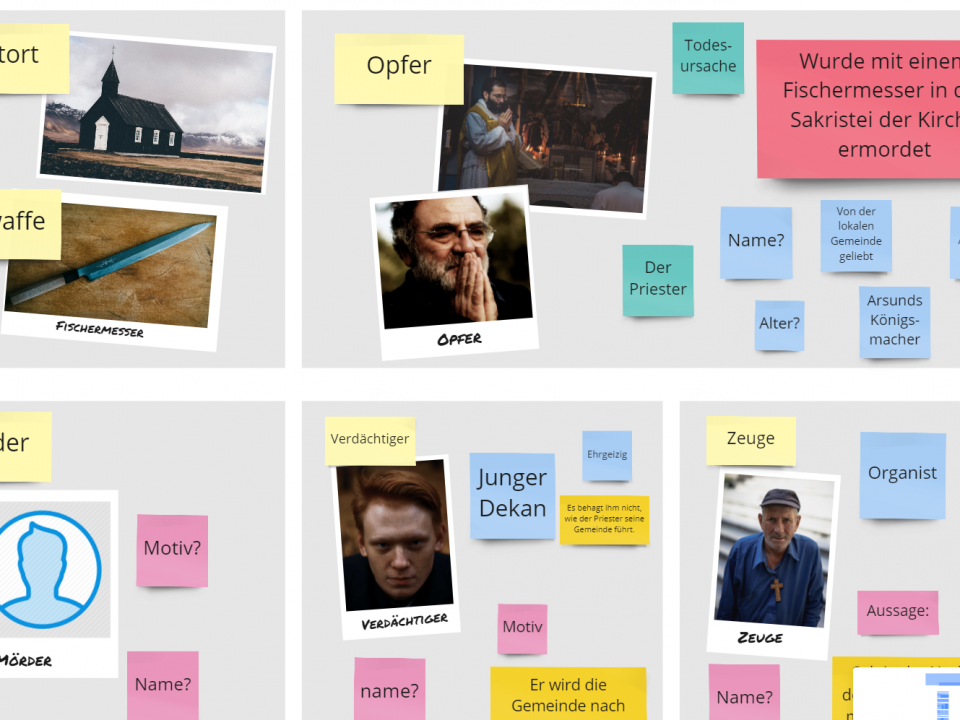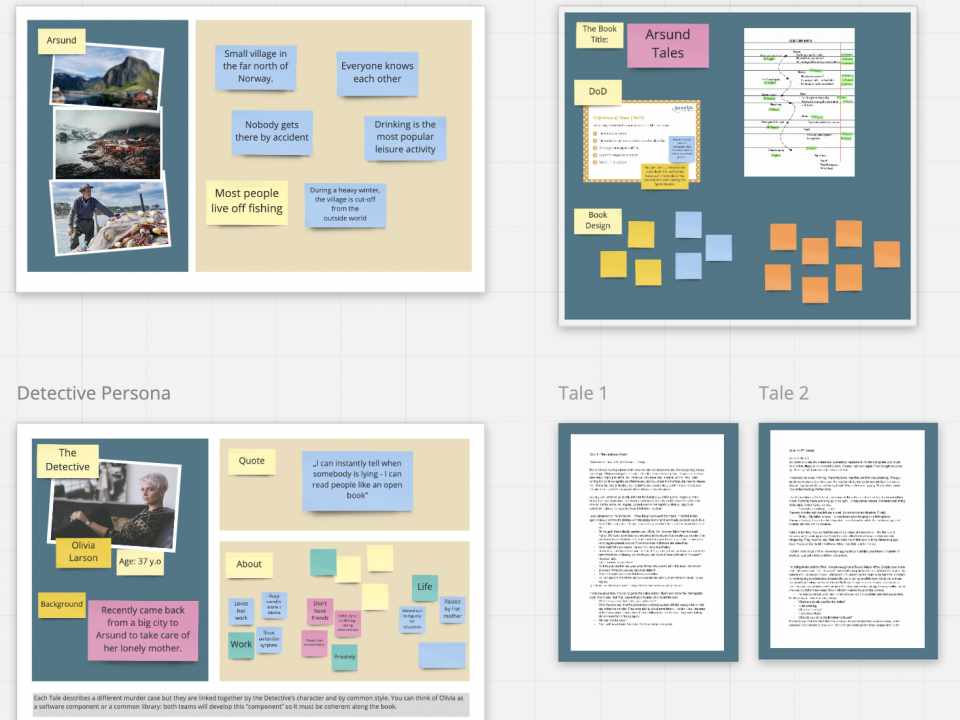- Join the next free webinar on 25th of April, 17:00-18:00 CET
Scrum Training based on ScrumTale simulation

Roles Definition Framework for Agile Organizations
December 12, 2019
The Product Mindset in software development
April 24, 2020Scrum Training based on ScrumTale simulation
ScrumTale is becoming more and more popular around the world. There are two categories of our customers: consultancy business and company’s internal Agile trainers. These two groups have different motivations to purchase ScrumTale, but all of them want a workshop which offers an experience of a real Agile environment. With ScrumTale you can touch and sense Scrum and go through your own aha moments. This simulation game is a result of our strong belief that people learn by experience followed by reflections. Lech Wypychowski, my friend and co-author of ScrumTale published an article about Kolb’s cycle and empirical learning, which I strongly recommend to read.
ScrumTale is a great standalone workshop, but the best use of this game is to make it a part of the Scrum training. Many trainers ask us about the details of such an event. In this article I’ll describe the concept of the one day Scrum training based on the ScrumTale simulation.
Key concepts and assumptions
To build the most effective learning experience we have made several assumptions:
- At the beginning introduce just a minimum level of basic information about Scrum.
- Just after that offer a real experience (ScrumTale).
- Then reflect on the observations and learnings. Make links to the Agile Principles and Scrum framework, but keep focus on principles, because principles matter more than framework.
- All more detailed exercises and framework details could be added as a second day agenda. Do not try to overload the day.
Warm-up
We always start with a warm-up to let everybody speak up for the first time. You can use your favorite one. I usually pick this one: ask the first person to describe his or her dream, challenge or success (for ultra introverts the is an option “what did you eat for breakfast?”), then he or she need to select the next person and ask the same question.
Just after warm-up, present the agenda of the day and agree on ground rules. Ask participants to write down (on post-its) what they would like to learn (learning goals). Quickly go through the cards and clearly point out what will be covered by the training and what’s beyond the agenda.
Scrum Introduction
Explain the Scrum framework in 20-30 minutes using flipchart. Every Agile trainer should be able to explain key concepts of Scrum in 15-30 minutes using flipchart and markers. My inspirations were Agile Product Ownership in a Nutshell (H. Kniberg) and The Scrum Framework (L. Adkins). The goal here is to introduce the very basic concepts used in ScrumTale game. Participants need to understand:
- Customer and product focus.
- Basics of roles, artifacts and ceremonies.
- Sprints.
- Empirical process and product control.
- Incremental delivery of a high quality, potentially shippable product.
This basic knowledge is enough to start the ScrumTale simulation.
ScrumTale
Let the people experience how it feels like to work in Scrum. They will be full of thoughts to discuss. They can learn more than Scrum basics. You can introduce more advanced topics like Story Mapping or Pair Programming (XP practice).
ScrumTale is based on the idea of a crime story written by the team. It could sounds like only a silly, funny exercise, but it’s much more. Because of the nature of a good crime story you cannot game product integration, quality or customer satisfaction. You need to understand customer (publisher and readers) needs and work as a team to deliver interesting, consistent, integrated product with common style, great ideas for plots, intelligent humor and surprising story ending.
ScrumTale Debrief
Now it’s time to reflect upon participants’ observations. It’s good to start with open question “what did you learn during the game?”. Let the team speak and share their thoughts. Then you can ask more specific questions like:
- Was the customer satisfied with the final product?
- Was the product “potentially shippable” at the end of each sprint? How important it was for the final success?
- How does each of the Scrum roles contribute to delivering product increment?
- Did the Scrum team have all the competencies needed to do their work?
- What about product quality?
- How does Scrum influence communication and collaboration?
- How do iterations and demo help to deliver the final product?
- How does the prioritization work in Scrum?
- Were the teams delivering what they have committed to during the sprint planning?
- Discuss observations regarding motivation and energy in team or teams (yes, basic ScrumTale setup is for two teams).
- How did the retrospective outcome impact the product?
One of the reflections about Scrum (which is good to discuss here) is that at the beginning, you can see a lot of chaos, but it slowly disappears and the team work in stable, new rhythm before the end of the simulation. It’s a key learning about complex human systems and self-organization. The remedy for the initial chaos is discipline in keeping the framework rules, not micromanagement of the team.
Agile Principles
After reflections regarding the Scrum experience it’s a time to discuss Agile Principles. It’s much easier to talk about them after ScrumTale workshop, because most of them are vivid in the game. It’s important to say that those 12 principles are the foundation for all Agile frameworks. Principles are more important than frameworks, that’s why Scrum offers just a minimum set of rules to start. You can facilitate this part in various ways: facilitated discussion or exercise where participants in small groups have a goal to “find ways to follow one chosen principle in your team”.
Wrap-up the training
At the end, wrap-up the day and go back to participants’ learning goals defined at the beginning of the day. Go through the cards. Ask them how much they are satisfied with the answers during the workshop. For things which were not covered during the day, you can point out the resources for further learning.
Finally, collect their feedback (Net Promoter Score) and go to the nearest pub and order a glass of a decent beer. You deserved it.
Two days training
One day is enough for some audience to get a solid introduction to Scrum. For Scrum teams we recommend two days training. Second day gives you a lot of space to cover roles, events, backlog management, estimation, values and more.
Summary
If you like the idea of empirical Scrum training you can purchase ScrumTale Box and provide a great, valuable workshop for your organization or your customers. You can also order a Scrum training from ScrumTale.com website. We have a constantly growing trainers community around the world.
If you want to join our trainers community, attend one of our Certified ScrumTale Trainer events and purchase the commercial licence. This investment usually pays off after just one Scrum training.



